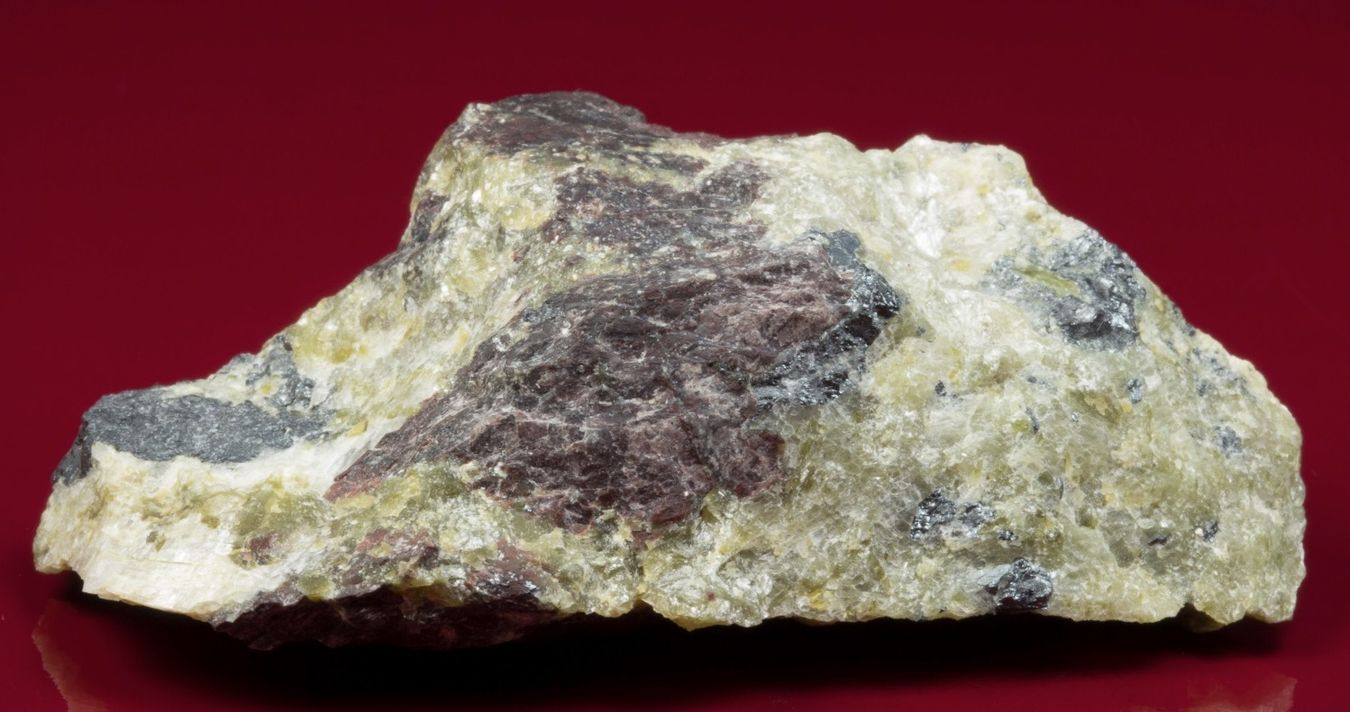
Have you ever heard of a mineral named after a scientist? Meet Althausite, a rare magnesium phosphate mineral named in honor of Professor Egon Althaus. Discovered in the 1970s, this intriguing mineral boasts a unique chemical formula: Mg₂(PO₄)(OH,F). Found primarily in Norway and Portugal, Althausite crystallizes in the orthorhombic system, giving it distinct physical properties. Its gray color, vitreous luster, and perfect cleavage make it a collector's gem. Despite its rarity, Althausite offers valuable insights into geological processes and mineral formation. Dive into these 25 fascinating facts about Althausite to uncover its secrets and significance.
Key Takeaways:
- Althausite, a rare mineral named after Professor Egon Althaus, has unique properties and is found in Norway and Portugal. Its softness and rarity make it a prized collectible among mineral enthusiasts.
- Althausite's high-pressure behavior and thermal expansion properties make it valuable for research in materials science and geophysics. Its historical context and classification add to its significance in the world of mineralogy.
Discovery and Naming
Althausite is a rare mineral with a fascinating backstory. Let's dive into its origins and the person behind its name.
- Discovery and Naming
Althausite was first identified in the 1970s. It was named after Professor Egon Althaus, a renowned mineralogist from the University of Karlsruhe, Germany. His contributions to mineralogy were significant, and this mineral honors his legacy.
Chemical Composition and Structure
Understanding the chemical makeup and structure of althausite helps in appreciating its unique properties.
-
Chemical Composition
The chemical formula for althausite is Mg₂(PO₄)(OH,F). This means it contains magnesium, phosphate, hydroxide, and fluoride ions. Its molecular weight is about 161.09 grams per mole. -
Crystal Structure
Althausite crystallizes in the orthorhombic crystal system. This system is characterized by a dipyramidal crystal class (mmm) and a space group of Pnma. This structure gives althausite its distinct physical properties.
Physical Properties
The physical attributes of althausite make it stand out among other minerals.
-
Color
Typically, althausite appears gray in color. -
Luster
It has a vitreous, or glassy, luster. -
Streak
When scratched on a porcelain plate, althausite leaves a white streak. -
Hardness
On the Mohs scale, althausite has a hardness of 3.5, making it relatively soft.
Occurrence and Rarity
Where althausite is found and its rarity add to its intrigue.
-
Occurrence
Althausite is found in serpentine-magnesite deposits, mainly in Norway and Portugal. The type locality is the Tingelstadtjern and Overntjern quarries in Modum, Buskerud, Norway. It is also present in the Panasqueira Sn-W deposit in Portugal. -
Rarity
This mineral is considered rare due to the specific geological conditions required for its formation. The presence of magnesium and phosphate ions in serpentine-magnesite deposits is crucial.
Mineralogical Association and Classification
Althausite's classification helps in understanding its place among other minerals.
- Mineralogical Association
Althausite is classified as a phosphate mineral under the International Mineralogical Association (IMA) classification. It belongs to the Strunz classification group 8.BB.25, which includes other magnesium phosphate minerals.
Thermal and High-Pressure Properties
Althausite's behavior under different conditions reveals much about its potential applications.
-
Thermal Expansion and Compressibility
Studies show that althausite has higher thermal-expansion coefficients compared to homeotypical silicates. Its unit-cell parameters change significantly under high pressure, although detailed refinement above 3.2 GPa is challenging due to strong orientation effects along its (001) perfect cleavage. -
High-Pressure Behavior
Experimental methods reveal that althausite's volume changes significantly under compressive forces. This indicates potential use in high-pressure applications, although precise compressibility measurements are hindered by limited diffraction pattern peaks.
Synthetic Varieties and Optical Properties
Synthetic studies and optical characteristics provide deeper insights into althausite.
-
Synthetic Varieties
Synthetic magnesium phosphates, including althausite, have been extensively studied. These synthetic forms help understand the structural and optical properties of natural althausite. -
Optical Properties
Althausite's orthorhombic crystal structure influences its optical properties. The dipyramidal crystal class affects its refractive indices and optical behavior, essential for accurate mineral identification.
Identification and Environmental Conditions
Identifying althausite and understanding its formation environment are key for mineralogists.
-
Identification
Identifying althausite requires examining its physical and chemical properties. The presence of magnesium, phosphate, hydroxide, and fluoride ions is crucial. X-ray diffraction patterns confirm its orthorhombic crystal structure. -
Environmental Conditions
Althausite forms in specific conditions, typically in serpentine-magnesite deposits. These deposits provide the necessary magnesium and phosphate ions, with hydroxide and fluoride ions contributing to its unique composition.
Geological Significance and Collection
The geological importance and collectibility of althausite add to its value.
-
Geological Significance
Understanding althausite's geological significance aids in mineral exploration and mapping. Its occurrence in specific deposits provides valuable information about the geological history of those regions. -
Mineral Collection
Althausite is prized among collectors due to its rarity and unique composition. However, its softness and limited availability make it challenging to collect and preserve.
Educational and Research Applications
Althausite's unique properties make it valuable in education and research.
-
Educational Value
Althausite serves as an excellent teaching tool in mineralogy classes. Its unique properties and rare occurrence make it an engaging subject for students. -
Research Applications
The study of althausite has various research applications. Its high-pressure behavior and thermal expansion properties make it a subject of interest in materials science and geophysics.
Historical Context and Classification
The history and classification of althausite provide context for its study.
-
Historical Context
The discovery and naming of althausite reflect the historical context of mineralogy. Recognizing Professor Egon Althaus's contributions highlights the importance of individual researchers. -
Classification
Althausite is classified under the phosphate minerals category. Its specific classification within this group is 8.BB.25 according to the Strunz classification system.
Crystal Dimensions and Cleavage
Detailed crystal dimensions and cleavage properties are essential for understanding althausite.
-
Crystal Dimensions
The crystal dimensions of althausite are a = 8.258 Å, b = 14.383 Å, and c = 6.054 Å. The unit cell volume is approximately 719.06 ų, and the calculated density is 2.98 g/cm³. -
Cleavage
Althausite exhibits perfect cleavage along one plane, a characteristic feature of its orthorhombic crystal structure. This cleavage plane is significant for its physical properties and identification.
Type Locality and Future Research
The type locality and future research directions offer more avenues for exploration.
- Type Locality
The type locality for althausite is the Tingelstadtjern and Overntjern quarries in Modum, Buskerud, Norway. This location is significant for mineralogical studies and collections.
Future research on althausite could focus on its high-pressure behavior, thermal expansion properties, and potential applications in materials science. Studying its occurrence in different geological settings can provide insights into the formation processes of phosphate minerals in various environments.
The Fascinating World of Althausite
Althausite, with its unique composition and rare occurrence, stands out in the mineral world. Named after Professor Egon Althaus, this magnesium phosphate mineral boasts a chemical formula of Mg₂(PO₄)(OH,F) and crystallizes in the orthorhombic system. Found primarily in Norway and Portugal, it forms in serpentine-magnesite deposits. Its gray color, vitreous luster, and white streak make it identifiable, though its hardness of 3.5 on the Mohs scale means it's relatively soft.
Althausite's high-pressure behavior and thermal expansion properties offer intriguing research opportunities. Its perfect cleavage and specific crystal dimensions further add to its distinctiveness. While rare, it holds significant educational value and is a prized find for mineral collectors. Future studies could unlock even more about this fascinating mineral, contributing to advancements in materials science and geophysics. Althausite truly is a gem in the world of mineralogy.
Frequently Asked Questions
Was this page helpful?
Our commitment to delivering trustworthy and engaging content is at the heart of what we do. Each fact on our site is contributed by real users like you, bringing a wealth of diverse insights and information. To ensure the highest standards of accuracy and reliability, our dedicated editors meticulously review each submission. This process guarantees that the facts we share are not only fascinating but also credible. Trust in our commitment to quality and authenticity as you explore and learn with us.


